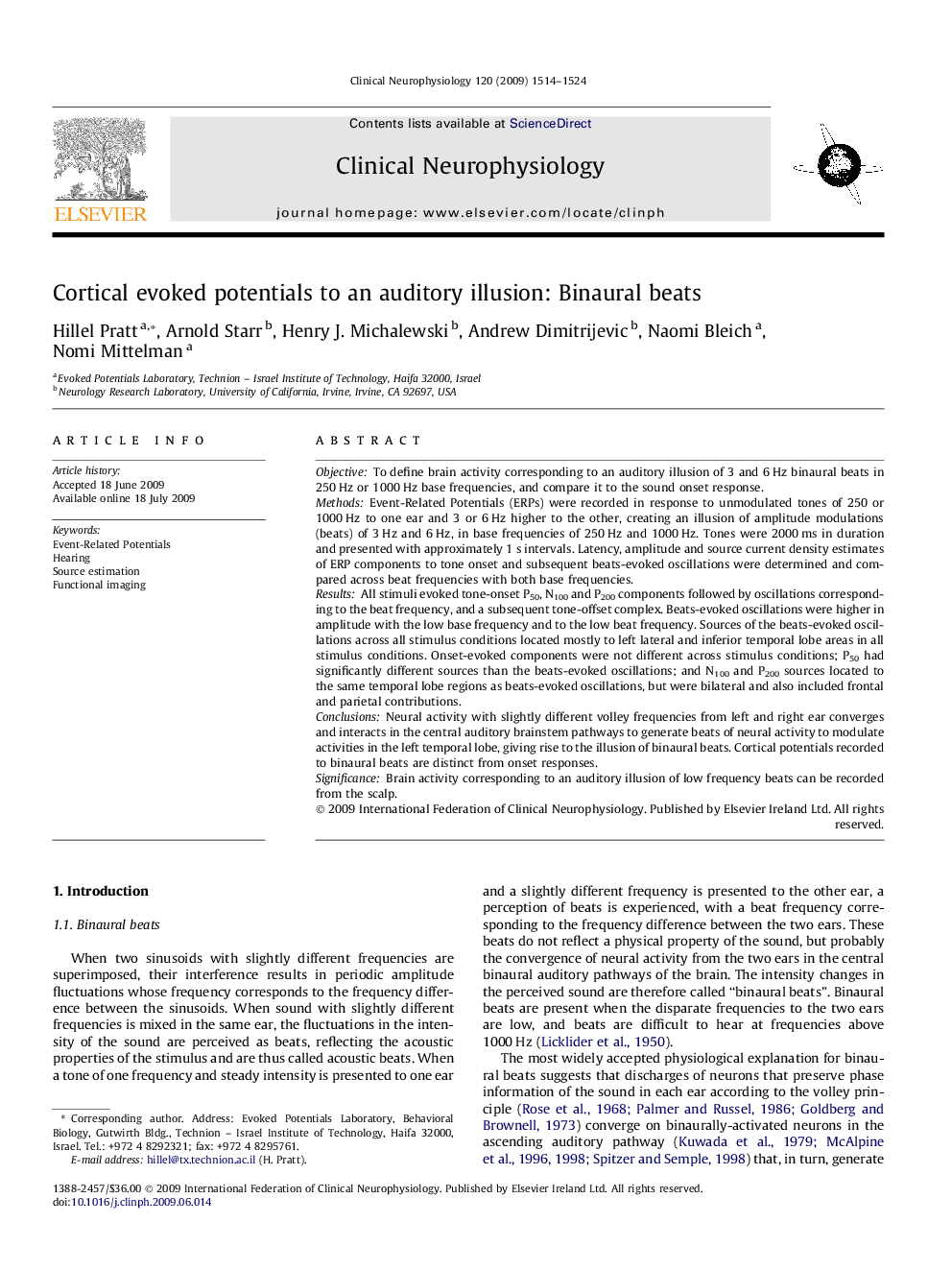| Article ID | Journal | Published Year | Pages | File Type |
|---|---|---|---|---|
| 3046278 | Clinical Neurophysiology | 2009 | 11 Pages |
ObjectiveTo define brain activity corresponding to an auditory illusion of 3 and 6 Hz binaural beats in 250 Hz or 1000 Hz base frequencies, and compare it to the sound onset response.MethodsEvent-Related Potentials (ERPs) were recorded in response to unmodulated tones of 250 or 1000 Hz to one ear and 3 or 6 Hz higher to the other, creating an illusion of amplitude modulations (beats) of 3 Hz and 6 Hz, in base frequencies of 250 Hz and 1000 Hz. Tones were 2000 ms in duration and presented with approximately 1 s intervals. Latency, amplitude and source current density estimates of ERP components to tone onset and subsequent beats-evoked oscillations were determined and compared across beat frequencies with both base frequencies.ResultsAll stimuli evoked tone-onset P50, N100 and P200 components followed by oscillations corresponding to the beat frequency, and a subsequent tone-offset complex. Beats-evoked oscillations were higher in amplitude with the low base frequency and to the low beat frequency. Sources of the beats-evoked oscillations across all stimulus conditions located mostly to left lateral and inferior temporal lobe areas in all stimulus conditions. Onset-evoked components were not different across stimulus conditions; P50 had significantly different sources than the beats-evoked oscillations; and N100 and P200 sources located to the same temporal lobe regions as beats-evoked oscillations, but were bilateral and also included frontal and parietal contributions.ConclusionsNeural activity with slightly different volley frequencies from left and right ear converges and interacts in the central auditory brainstem pathways to generate beats of neural activity to modulate activities in the left temporal lobe, giving rise to the illusion of binaural beats. Cortical potentials recorded to binaural beats are distinct from onset responses.SignificanceBrain activity corresponding to an auditory illusion of low frequency beats can be recorded from the scalp.
